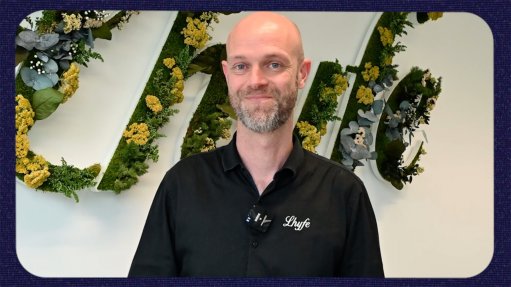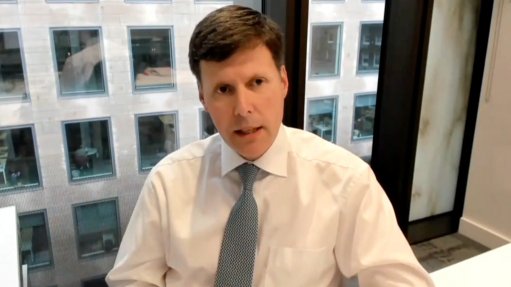Renewables implemented at mines show promise


RENEWED ZEEL The drive towards a green economy has seen renewable energy technologies grow exponentially
Mining industry employers’ organisation Minerals Council South Africa says that, by the end of this year, mines in the country will have established the capacity and infrastructure to generate about 100 MW of power from renewable-energy installations.
This includes installations by gold mining houses Gold Fields, with a 50 MW solar plant; Pan African Resources, with a 10 MW solar plant, which will power its Elikhulu operations, in Evander, Mpumalanga; and Harmony Gold, with a 30 MW solar plant.
“In additiion, 6 500 MW of mining-related renewable-energy projects are being financed from the mining houses’ balance sheet or by independent power producers,” says Minerals Council technology analyst Christian Teffo.
While projects totalling 100 MW will start operating this year, about 1 000 MW of the 6500 MW will come on line in 2023, with 2 000 MW following in 2024.
“The remainder of the projects are expected to be completed by 2030 and bringing the 6 500 MW on stream will cost over R120-billion,” he adds.
Most local mining houses tend to adopt solar photovoltaic (PV) as a renewable-energy option, owing to the relatively low cost of the build and the time it takes to obtain the necessary authorisations.
“It can take up to four years to secure wind generation approval, while solar will, at most, take two years, and if the process is accelerated, authorisations can be awarded within a year.”
The current split of mining-related renewable installations is about 25% wind installations and 75% solar PV plants, adds Teffo.
However, with wind turbines producing minimum efficiencies of about 35% – in terms of converting energy into electricity – and solar PV producing efficiencies of about 25%, there is an uptick towards more wind installations.
He stresses that removing some of the red tape and allowing for parallel processes on wind energy projects might accelerate its uptake.
The drive to renewables and its uptake by mines are positive, as it will give miners much-needed energy security, reduce greenhouse-gas emissions and lower electricity costs.
“This will also inject much-needed electricity into the national grid and allow State-owned power utility Eskom some space to conduct maintenance on existing power infrastructure,” he adds.
Mitigation Plans
Teffo explains that the Eskom Transmission Development Plan needs more than R179-billion to augment the South African transmission network and substations required to wheel energy.
“This is a big challenge. Eskom has a strategy to prioritise corridors to ensure that maximum opportunity is realised from this augmentation.”
Consequently, the corridors that will allow for more energy to flow are being prioritised.
Eskom has a wheeling framework, and can negotiate and conclude wheeling agreements, whereas municipalities do not and, as a result, they struggle to facilitate agreements.
Teffo says one of the greatest challenges facing the renewable-energy sector is red tape arising from government regulations.
“However, after many years of advocating for the removal of red tape, government is now more receptive to the suggestion,” he avers.
This is evident in last year’s amendment to Schedule 2 of the Electricity Regulation Act, which has raised the embedded generation threshold and enabled private industry to build power generation plants up to 100 MW.
Further, the Department of Mineral Resources and Energy last month published a draft amendment to Schedule 2, which proposes to remove the 100 MW cap for private industry entirely.
“This is a great move, as it will allow for the plants to be built according to companies’ needs and with economies of scale,” he lauds.
The Department of Forestry, Fisheries and the Environment (DFFE) has also released draft regulations that aim to remove the environmental-impact assessment requirements for a solar PV plant in areas of “low to medium sensitivity”.
The developer of the solar PV plant would be required to register only with the DFFE before construction begins.
Teffo says government is engaging with business and the Minerals Council is hopeful that more red tape will be removed.
Meanwhile, as a participant in the Presidency’s Electricity Intervention Task Team, Teffo assists in following up on the challenges faced by these new renewables projects.
His involvement in the task team has helped to accelerate authorisations, which are now being processed in less than a year.
Minerals Council has also advocated for the removal of the power purchase agreement from National Electricity Regulator of South Africa’s registration requirement, which has been implemented.
“Minerals Council continues to advocate for the mining industry and intends to continue participating in the task team to drive the recognition of mining electricity generation projects as Strategic Integrated Projects,” Teffo concludes.
Comments
Press Office
Announcements
What's On
Subscribe to improve your user experience...
Option 1 (equivalent of R125 a month):
Receive a weekly copy of Creamer Media's Engineering News & Mining Weekly magazine
(print copy for those in South Africa and e-magazine for those outside of South Africa)
Receive daily email newsletters
Access to full search results
Access archive of magazine back copies
Access to Projects in Progress
Access to ONE Research Report of your choice in PDF format
Option 2 (equivalent of R375 a month):
All benefits from Option 1
PLUS
Access to Creamer Media's Research Channel Africa for ALL Research Reports, in PDF format, on various industrial and mining sectors
including Electricity; Water; Energy Transition; Hydrogen; Roads, Rail and Ports; Coal; Gold; Platinum; Battery Metals; etc.
Already a subscriber?
Forgotten your password?
Receive weekly copy of Creamer Media's Engineering News & Mining Weekly magazine (print copy for those in South Africa and e-magazine for those outside of South Africa)
➕
Recieve daily email newsletters
➕
Access to full search results
➕
Access archive of magazine back copies
➕
Access to Projects in Progress
➕
Access to ONE Research Report of your choice in PDF format
RESEARCH CHANNEL AFRICA
R4500 (equivalent of R375 a month)
SUBSCRIBEAll benefits from Option 1
➕
Access to Creamer Media's Research Channel Africa for ALL Research Reports on various industrial and mining sectors, in PDF format, including on:
Electricity
➕
Water
➕
Energy Transition
➕
Hydrogen
➕
Roads, Rail and Ports
➕
Coal
➕
Gold
➕
Platinum
➕
Battery Metals
➕
etc.
Receive all benefits from Option 1 or Option 2 delivered to numerous people at your company
➕
Multiple User names and Passwords for simultaneous log-ins
➕
Intranet integration access to all in your organisation



















